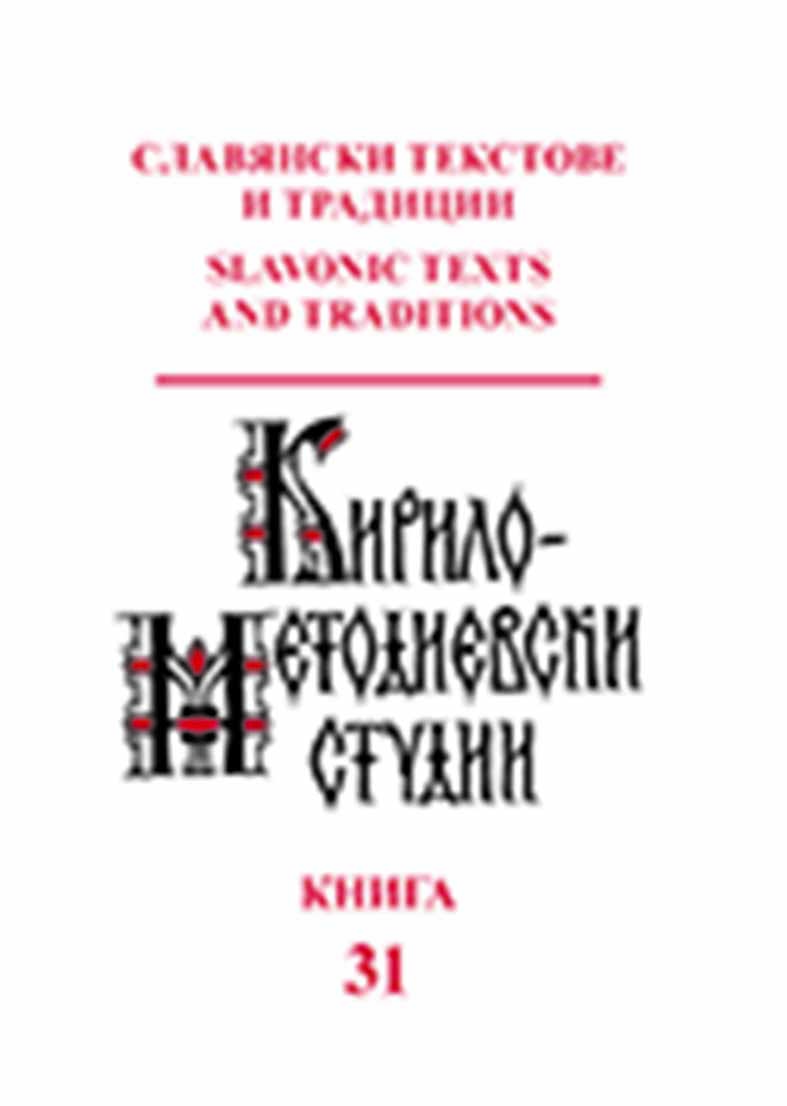Translating from Latin into Croatian Church Slavonic – the Case of the Legenda Maior Sancti Francisci
Translating from Latin into Croatian Church Slavonic – the Case of the Legenda Maior Sancti Francisci
Author(s): Ana Mihaljević, Milan MihaljevićSubject(s): Language studies, Language and Literature Studies
Published by: Кирило-Методиевски научен център при Българска академия на науките
Keywords: Croatian Glagolitic Breviaries; Legenda maior sancti Francisci; Translating from Latin into Croatian Church Slavonic.
Summary/Abstract: The Office for St Francis of Assisi is one of the texts translated from Latin by Croatian Glagolites not earlier than the second half of the 13th century. Such texts are interesting because they show the Glagolites’ level of knowledge of Latin as the source language as well as of Croatian Church Slavonic as the target language. Both languages were not spoken languages but literary liturgical languages at the time and did not have any native speakers. The office for St Francis has been preserved in 17 Croato-Glagolitic breviaries from the 14th to 16th centuries. It is translated from the Officium rhytmicum and contains lessons from St Bonaventure’s Legenda maior sancti Francisci. The topic of this paper is the Croatian Church Slavonic translation of Bonaventure’s Legenda. The Croatian Church Slavonic texts are compared with one another, as well as with the Latin original. Special attention is given to the translation of subordinate clauses and constructions that do not have a translational equivalent in Croatian Church Slavonic, such as the ablative absolute, nominative and accusative with infinitive, gerund and gerundive, etc. The stemmatological relations between the codices are relatively complicated. The breviaries differ in the length of the text and its division into lessons. Regardless of this variation, it is evident that all codices contain the same translation. Differences between them are small, relatively unimportant, and often restricted to a single codex. Since the oldest preserved manuscripts are descended from an older Glagolitic antigraph the text was translated at the latest in the first part of the fourteenth century, probably even at the end of the thirteenth century. The syntax of the Croato-Glagolitic translation of the Legenda maior sancti Francisci is considerably influenced by the Latin original. The translation is very literal, and the translator tried to follow the Latin original as closely as possible. However, it is evident that he was aware of the most typical ways of translating certain language features, such as constructions, participles, verb forms, prepositions, etc.
Journal: Кирило-Методиевски студии
- Issue Year: 2021
- Issue No: 31
- Page Range: 243-310
- Page Count: 68
- Language: English
- Content File-PDF

